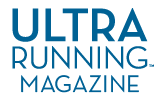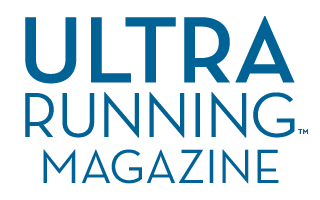It’s safe to say that the 2020 running season didn’t go as expected. However, winter is the ideal time to work on consistent speed work without the interruption of races. In some cases, it makes perfect sense to back off of training like you might in a normal winter, because any reduced training or racing effort in recent months has been countered by increased uncertainty, and work or life stress. For others, the lack of races means finding a focus is exactly what’s needed right now.
Instead of preparing specifically for your next ultra, a sparse race calendar is an opportunity to focus on faster running. Here are the benefits of working on speed in the upcoming months, which could set you up for significant improvements once racing season arrives.
Motivation
I’ve spent a lot of time discussing how to maintain motivation without races – the usual end game of a build-up. Having specific targets makes the grind of training more feasible and easier to push through on tough days. For those who’ve run less mileage than usual, finding something new and exciting is extremely helpful.
If you haven’t been practicing specific running techniques, they can be improved relatively quickly and there’s nothing more fun than seeing immediate progress. It doesn’t matter if old PRs from years ago are out of reach, because the growth you’ll see from progress is inspiring. This is especially true if your distance running performance has plateaued, bringing back the joys of high school cross-country or track.
Variety
I’ve experienced hesitancy from runners who think of themselves as distance runners and not “good” at short distances. That’s a self-fulfilling prophecy, and if you make yourself into a well-rounded runner, then you’ll be able to alternate between different types of racing and training, year after year. This keeps it exciting and reduces the chance of injuries or mental burnout.
Short, solo time trials are surprisingly motivating (a track is ideal, but unbroken stretches of sidewalk are fine, too). A particular favorite for my runners is the one-mile time trial. It’s logistically simple and less intimidating than you might think, especially if you treat the first one as a learning experience and keep trying every few weeks.
Improved Running Economy
Enjoying your running leads to greater consistency, and that’s the single biggest determinant of improving your fitness. Also, the specific gains from genuinely hard running will make you a more powerful runner, raise your oxygen delivery capacity to your muscles, and also improve your running economy. The act of faster running upgrades your movement patterns to require less energy – meaning a lower oxygen requirement – to go at a given speed. That flows through to running at slower paces in ultras and stronger uphills, too.
Here are some guidelines (any increase in training workload has risk and should be done gradually):
- Listen to the feedback your body gives you and avoid getting carried away by doing too much faster running early on.
- Ease into it and aim to keep 80% of your running volume relaxed, at a level where you can talk in full sentences. Then add a variety of harder efforts to make up the remaining 20%.
- However, make sure you don’t hold back too much in the workouts, especially after a couple of weeks of getting used to more intensity.
One of the biggest differences between elites and mid-pack runners is that speedsters have a wider range of paces and efforts in their training while most runners have a clustered set of efforts with less variation.
Judge Your Effort
Forcing yourself to push more on speed sessions and hold back even more on easy days will refine your judgement of effort. In particular, I get my clients to think about effort in terms of race intensities, meaning how long an effort level can be sustained for the conditions on the day (weather, terrain, gradients and current fitness level). The better you can judge if an effort will last for five minutes or 50, the easier it is to adapt on race day. This is one of the most important skills in distance running – especially in ultras where more variables change during a race than during a shorter road event.
Accessibility in Winter
A final reason to prioritize speed work this winter is that it’s easier to train on roads, treadmills or a track when trails are covered in ice and snow. There’s no need to avoid long runs, but do you really need to grind out a mountainous trail run in blizzard conditions to keep yourself sane when a solid, fast run would be more sustainable and take less mental energy to get out the door?
This could be the first chunk of time in a long while to dedicate to shorter, more intense training for its own sake. As a bonus, it’ll keep you excited about training and take you to a new level the next time you race an ultra. But the biggest takeaway is that this is an opportunity that doesn’t always exist – a time of fewer races where training can stack up without the interruption of a taper and post-race recovery.



